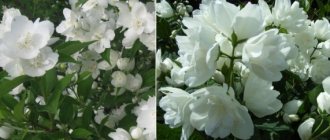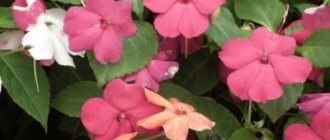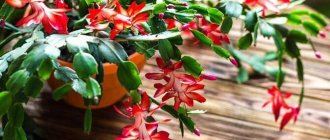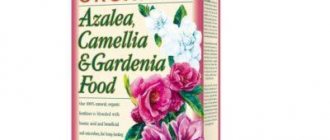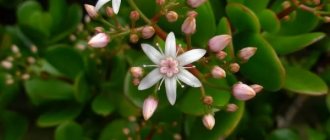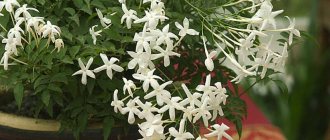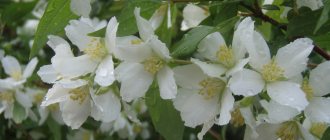Jasmine, or mock orange, is highly decorative and can be grown at home or in the garden. Most often, the plant has beautiful white flowers. Due to this, it is often used in landscape design.
With proper care, jasmine blooms magnificently
Many people are interested in what year after planting jasmine blooms. The timing of the beginning of flowering directly depends on the variety. This usually occurs between 2 and 4 years of age.
However, there is no guarantee that the crop will bloom at this age. Growing conditions may not be suitable for the crop, which will lead to bud drop. In such a situation, it is necessary to organize care for the jasmine bush so that it can bloom.
The flowering period depends on the variety of shrub:
- spring - bloom from early spring to late summer;
- summer - flowers appear from June and persist until the first frost;
- winter - bloom from the beginning of the year to mid-spring.
The growing region is also important. So, in the Moscow region, flowers will appear earlier than in Siberia, but later than in the southern regions. When planting, you need to know how many years it takes for jasmine to begin to bloom.
Differences in the flowering of garden and indoor jasmine
The main feature of a houseplant is the presence of a period of winter dormancy. Flowering can last from early spring until autumn. When grown at home, flowers are present for 3 weeks. Then they fall off, and the bush forms new shoots.
Important! Indoor jasmine has a strong smell, which can cause headaches. Therefore, the container with the culture should be taken out to another room overnight.
Indoor jasmine has a dormant period.
What year does jasmine bloom and how long does the flowering period last?
Before you worry about how the plant is doing, you need to know what year after planting jasmine blooms. Depending on the variety, you will have to wait from 2 to 4 years.
Jasmine is easy to care for, but to see the splendor of its inflorescences, you will have to make some effort
Differences in the flowering of garden and indoor jasmine
The difference between jasmine that grows in the garden and one that is in a pot in the house is the timing of the release of buds. The plant stays dormant indoors during the winter. The first buds appear around March-April and last until early autumn.
For most outdoor varieties, the active period begins in June and lasts until the first night frosts.
Additional Information! The winter type of jasmine blooms in January-April. Jasmine sambac with white double petals or polyanthus, when creating comfortable conditions, will delight with beautiful and lush inflorescences throughout the year.
How to make mock orange bloom
In order for garden jasmine to delight you with its flowering, you must follow the basic rules for planting and care. The plant needs regular watering, timely weeding of the soil around the bush, and loosening the soil. It is advisable to plant the shrub in sunny areas with possible shading, where there is no constant stagnation of moisture.
Basic conditions for lush flowering.
- Fertilizer. Fertilizing with mineral fertilizers is carried out twice during the growing season. The first time is in the spring with the beginning of growth or at the moment of full bloom of the leaves. Presumably this is March-April. The second time is in the fall, starting from the last week of August until October. At the beginning of intensive growth of the bush, it is preferable to use nitrogen-containing preparations. During the formation and opening of flower buds, it is better to apply potassium fertilizers. Phosphorus compounds are added throughout the summer. Liquid fertilizers are considered the most effective.
- Trimming. At the end of June, garden jasmine should be pruned. Remove thickened shoots that grow inside the bush. Young shoots must be left in place so that the mock orange will bloom in the new season. Next year, in the spring, around March, it is worth thinning out the bush. Provided that it has grown greatly. We should not forget about rejuvenating the bush. Branches that are 10 or more years old should be removed at the root. By trimming the crown, there will be a powerful stimulation of the flowering and growth of mock orange.
- Most types of mock orange are frost-resistant. Even if the shoots freeze, they quickly recover. Shelter for the winter is not required. However, you need to take care of the root system before winter. The soil under the bushes is mulched with peat or pine needles with a layer thickness of 3-4 cm.
- At the moment of swelling of the buds, before and after the mock orange flowering period, it is recommended to carry out preventive spraying with insecticides and fungicides.
- If necessary, transplantation is carried out in early autumn or spring. First you need to water the bush generously and let it stand for 24 hours. Transplantation is carried out in the evening, after cutting off some of the dry shoots.
Reasons for the lack of flowering in garden and indoor jasmine
Why hydrangea does not bloom - what to do if a garden flower produces only foliage
Knowing how many years it takes for jasmine to bloom, some gardeners note that time passes, but the buds never appear. In such a situation, you need to reconsider the care of the plant.
Lush leaves and lack of buds are a common problem.
Stagnation of moisture or lack of it
The plant loves moderate watering. Its excess leads to rotting of the roots, which is why the bush gradually fades.
When placing a shrub on a site, you need to choose the right place for it. It is prohibited to place the plant in places where groundwater passes close to the ground and in lowlands where water accumulates. Watering rules:
- regular and abundant;
- It is forbidden to use cold water and from the tap;
- watering is carried out with filtered or purified, settled water;
- It is recommended to add a few drops of acetic or citric acid to the water to acidify the liquid;
- if jasmine grows in a pot, the container should have drainage and holes in the bottom to allow residual water to escape.
Additional Information! The top layer of soil should dry out between waterings. Stagnation of water is also detrimental to home jasmine.
Insufficiently acidic soil
Jasmine should only be planted in acidic soil. If the soil is alkaline, jasmine buds will never appear.
Diseases and pests
One of the factors why garden jasmine does not bloom is its damage by insect pests or diseases. Pests:
- Aphids are large, green, and settle on the tops.
- The weevil settles in the soil near the plant and feeds on the sap of leaf blades.
- Spider mite - leaves are dotted with numerous dots, cobwebs are visible.
Diseases are indicated by yellowed or curled leaves, wilting of the entire bush, lack of growth, and falling leaves.
Diseases of the plant often lead to a slowdown in its development
Errors when applying fertilizers
The plant stops producing buds if it receives large quantities of nitrogen fertilizers. They promote the active growth of shoots and leaves, which is why the bush does not have the strength to form inflorescences. Recommended feeding mixture:
- urea 15 g;
- superphosphate 30 g;
- potassium sulfate 15 g;
- water 10 l.
Fertilizers must be alternated using mineral and organic substances.
Inappropriate lighting
If indoor jasmine does not bloom, what should I do? First of all, you need to check where the flowerpot is placed. Despite the fact that this plant is a light-loving plant, the lighting should be plentiful, but diffused, without direct sunlight. The sun causes the leaves to burn and fall off.
Additional Information! It is recommended to place the jasmine pot on the windowsills on the west or east side. On the north side it will not have enough lighting.
Temperature changes
Low temperatures at night and high temperatures during the day have a detrimental effect on the plant. It is easiest to eliminate this factor for jasmine that grows indoors. The optimal temperature is from +18 to +22.
No trimming
If the shoots are not trimmed in a timely manner, the bush will spend all its energy on their growth. Jasmine should be no more than 2 m long. If the height is 3 m or more, there will be no buds. Pruning should be regular, following a number of recommendations:
- Autumn - carried out after all the buds have withered. You need to trim off all dried inflorescences, bad and weak shoots. The cut areas should be treated with garden decoction.
- Spring – until early April. Those shoots that did not survive the winter well, old branches, and leaves left over from last year must be removed.
- Rejuvenating – carried out every 3 years. Old branches are completely cut off.
After pruning, the bush should be watered abundantly.
One of the mandatory measures is regular pruning.
Plant age
A bush that is too young and under 3 years old will not produce buds. All his strength goes into growth and strengthening.
Description of the plant
Jasmine can be grown both in the garden and indoors. It is a shrub with thin shoots. They bear trifoliate leaves of a dark green hue - odd-pinnate. The ends of the stem are crowned with beautiful flowers, which can be single or umbellate. They gather in shields. The shades of the buds are white, yellow and pink. They depend on the type of plant and area of growth. After flowering, jasmine produces fruits that are not eaten.
Jasmine has a very pleasant and delicate aroma. But growing it in a small room is not recommended, as the smell of the flower becomes very intense and can lead to headaches.
Other Possible Flowering Problems
In addition to the lack of buds, the gardener may encounter such phenomena as their too small size or their premature shedding.
Shedding of buds
How to propagate garden jasmine in spring and summer
Jasmine can drop buds prematurely under the influence of the following factors:
- Draft or strong wind.
- Use for cold water irrigation.
- Untimely and incorrect transplantation, when the plant has already begun to produce buds.
- Dry soil, lack of nutrients and minerals.
- Incorrectly selected fertilizer or its use in excessive quantities, which causes the roots to burn.
- Lack of lighting.
Jasmine may drop its buds because the room is too hot or exposed to direct sunlight.
Additional Information! It is recommended to plant jasmine outdoors in partial shade or in a place where the lighting is good but diffuse. It is especially necessary to follow this recommendation when planting a plant in the Moscow region, where summers can be very hot.
Small flowers
Varieties of mock orange with large inflorescences include:
- Mont Blanc;
- Pyramid;
- Schneeshturm;
- Zoya Kosmodemyanskaya;
- Virgin;
- Coronary.
Owners of jasmine with large inflorescences may encounter a problem such as insufficient bud size. This is due to improper care of the plant:
- frequent drying out of the soil;
- absence or insufficient pruning, due to which the plant puts all its energy into the growth of new shoots;
- insufficient refills or their incorrect choice;
- unfavorable location of the plant in the country - the influence of a draft or strong wind, stagnation of moisture.
Establishing care will help normalize the condition. If the plant is in a draft or exposed to direct sunlight, replanting will be required.
Attention! Transplantation is prohibited during the period when jasmine is actively putting out new buds.
Violation of landing rules
Another reason for failure to bloom is an incorrectly selected planting site. If the mock orange is in the shade, then it should be moved to a sunny area. The shrub is light-loving; if there is insufficient lighting, the shoots are pulled out and buds are not formed.
The absence of mock orange flowering can occur due to improper planting. If the seedling is too deep, the root collar becomes warm. The plant does not develop fully.
For garden jasmine, the composition of the soil matters. The land in which the bush is planted must be fertilized. If this moment is missed, it is recommended to transplant the mock orange into a fertile soil layer. Preference is given to moist, loose soil.
What to do if jasmine does not bloom on your property or at home
Indoor jasmine - how to care
The absence of buds in a plant over 3 years old is a signal to the gardener that he is not caring for it correctly. To restore the condition of jasmine, it is necessary to carry out a number of measures to eliminate negative factors:
- normalize watering - it should be frequent, but without overwatering;
- change, if necessary, the location - diffused light or partial shade is needed;
- change fertilizers. If only nitrogen substances were introduced, it is necessary to alternately use mineral and organic feeds;
- normalize cropping. It should be regular, held in autumn and spring.
If the jasmine is on the street and all measures to resuscitate it have been in vain, it needs to be transplanted. Perhaps it's all about the soil being poor in nutrients and minerals.
Jasmine will thank you for comfort with delicate, beautiful petals.
Landing
This procedure is no less important, on which how the shrub takes root and adapts depends.
Before purchasing a seedling from a nursery, ask about its age. Seedlings that are no more than a few years old are most suitable for planting. The gap between young bushes should not be less than 0.50 m if you plan to plant the bush as a hedge
If just in a group planting, then keep a distance of 1.5 - 2 m. It is very important to properly deepen the root collar of the bush when planting - 2 cm deep and no more, because if it is deeply buried in the ground, a putrefactive process may begin , and the plant will die. The diameter of the hole is about half a meter in depth and width, not less than 40 cm. If you purchased rare and expensive varieties, then for their better adaptation and survival, you can use the drug Zircon or HB-101. Before planting, you need to take a good look at the root system. Remove all old, broken and dry shoots, and do the same with the above-ground part. Place the seedling in the planting hole and straighten the root well
Fill the top with pre-prepared soil mixture. Try to compact the soil a little so that no voids form in the soil. After planting, water the young tree with 10 liters of water. For the first 2 weeks, try to water the plant every few days. When you see that the shrub has taken root, water as needed. When you are simply replanting a shrub, for example, from a container or pot, the planting hole can be made a little smaller. The main condition is that the root system feels free. Mulch the surrounding area with peat or compost. Mulching will allow moisture to remain longer, which is convenient if you cannot often come to your summer cottage. Also, mulch protects the bush from the growth of weeds.
How to care for jasmine after the flowering period
During the dormant period, caring for jasmine includes:
- reducing the frequency and amount of fertilizers applied using organic matter;
- reducing watering, but without prolonged drying out of the soil;
- pruning;
- preparation for wintering.
Pruning at the end of the active period involves removing faded buds and bad, weakest shoots.
Most varieties of jasmine are frost-resistant. But in regions with severe frosts, it is necessary to build a shelter for the plant, covering it with spruce branches or agrofibre. Young shoots under 4 years of age especially need shelter.
Jasmine is a beautiful plant, with a variety of colors of delicate petals, for which it is so loved. But it happens that it cannot bloom and the reason for this is improper care. To normalize the condition of the plant, it is necessary to create comfortable conditions for it outdoors or in a pot.
Home care
In order for the plant to grow at home, its care should be as follows:
- The soil. She must be well prepared. If necessary, you can add deciduous clay soil or sand to the soil. You can also add a little peat.
- Lime or water. If it is not possible to add a little lime, the flower can be watered with oxidized water. The main thing is to never pour more water than it requires.
- In warm weather, place on the balcony. In warm regions, this type of flower is recommended to be planted in open ground. During the warm season, the leaves need to be sprayed with water regularly.
- Temperature. It is necessary to maintain the temperature. It should not exceed twenty-three degrees and fall below sixteen degrees Celsius.
- Fertilizer. The flower needs to be fed with all kinds of fertilizers. The important point is that this should be done no more than once every two weeks.
- Watering. The plant should be watered as often as the soil dries out, but no more than several times a week. In winter, watering is reduced significantly.
- Trimming. Shoots need to be pruned because this is the main factor for flowering. To begin with, dry areas of the plant are removed, followed by bare shoots.
- Light. If it is not possible to expose jasmine to light, an artificial source will suffice.
Mistakes when watering
If the soil in the garden is constantly wet, you should not plant jasmine there. In some cases, this situation can be corrected by ensuring good drainage. To do this, take gravel, pebbles and crushed stone. All materials are laid out at the bottom of the hole.
Why garden or indoor jasmine does not bloom and what to do
Lack of moisture also causes problems with flowering. Without water, the plant loses strength, first stops blooming, and then dies completely.
Note! The plant cannot bloom if it is grown from seeds. Such specimens produce buds only after 7-8 years of life.
Healing properties
Since parts of the plant contain salicylic acid, the plant is used as an anti-inflammatory agent.
Indoor jasmine is actively used in the preparation of medications that are used to treat diseases:
- Hepatitis;
- Cirrhosis of the liver;
- Gynecological diseases;
- Hypotension;
- Insomnia.
Jasmine is effectively used in aromatherapy , since the aroma of flowers has a beneficial effect on the nervous system, improving mood, normalizing sleep and suppressing depression.
Aromatherapy - a rare use for indoor flowers
Not only jasmine can help a person with health problems. See how Aloe Vera (Agave) helps against various ailments.
Thus, jasmine is a very beautiful and noble plant that will decorate any room design. In addition, the flowers of the plant have an incredible aroma. At the same time, jasmine is a very capricious crop, and caring for it requires serious skills in floriculture.
Pests and diseases
The most dangerous pests that cause diseases of indoor jasmine:
- Whitefly - damage is caused by larvae that colonize the underside of leaves and drink the sap of the plant. The leaves become covered with whitish or yellowish spots, curl and fall off. Against the pest, the diseased plant is sprayed with Fufan, Actellik, and Agravertin every three days.
- The red spider mite weaves a web around the internodes and covers the underside of the leaves with excrement. To combat the pest, the leaves are regularly washed in the shower with warm water (up to 50 o C) and sprayed with Actellik solution.
Kinds
Multifloral jasmine (Jasminum polyanthum)
Jasmine genus (Jasminum) has 198 plant species and belongs to the Olive family (Oleaceae). These plants grow in tropical and subtropical regions of Asia, Africa, Australia, on the islands of the South Pacific Ocean, and one species each in the Mediterranean and South America.
The genus name is the Latinized Persian name of the plant.
These are trees, erect or climbing shrubs, evergreen or deciduous. Branches are cylindrical, angular or grooved. Leaves are opposite or alternate, rarely whorled, simple, trifoliate or odd-pinnate, usually on articulated petioles. The inflorescences are mostly racemose, paniculate, corymbose or umbellate, rarely solitary flowers. The flowers are bisexual and usually fragrant. The calyx is campanulate, cup-shaped or funnel-shaped, 4-16 lobed. The corolla is white or yellow, less often reddish or purple, funnel-shaped, with 4-16 lobes, imbricated over each other in the bud. The fruit is a berry.
Multi-flowered jasmine (Jasminum polyanthum) - grows in Western China in valleys and forests, at altitudes of 1400-3000 m above sea level.
Liana 1-10 m tall. The branches are angular, bare. The leaves are opposite, pinnately divided or pinnately compound, on petioles 0.4-2 cm long. The leaves are 5-7, ovate, 1.5-8.5 cm long and 1-2.7 cm wide, round or almost heart-shaped at the base, obtuse or sharp at the apex. Inflorescences are racemes or panicles terminal or axillary, 5-50 flowers. The flowers are white, reddish outside and in the bud, with 5 oblong or narrow ovate lobes 0.9-1.5 cm long. The aroma of the flowers is stronger than that of other species.
Jasmine sambac, or Arabian (Jasminum sambac) - originally from India, is widely cultivated throughout the world. Used to flavor tea.
Evergreen tropical liana up to 3 m tall. The branches are forked, slightly compressed, sometimes hollow, sparsely pubescent. Leaves are opposite, simple, on jointed petioles 2-6 mm long, from round to elliptical or obovate, 4-12.5 cm long and 2-7.5 cm wide, glabrous, except for tufts of hairs in the axils of the veins at the bottom of the leaf, on the ends are blunt, sometimes almost heart-shaped at the base. Inflorescences are terminal, umbellate, 1-, 3-, or 5-flowered. The flowers are very fragrant, white, with a tube 0.7-1.5 cm long and oblong or almost rounded limb lobes 5-9 cm long. Flowers can be single, semi-double or double.
|
|
|
Azorean jasmine (Jasminum azoricum) is native to the island of Madeira.
Evergreen liana up to 5-6 m tall. The leaves are trifoliate, bright green, leaflets up to 3 cm long. The flowers are white, in axillary panicles, and fragrant (the plant is known as jasmine with the scent of lemon). Blooms in summer.
Jasmine Bees (Jasminum beesianum) - grows in Western China on slopes, meadows, forests, at altitudes of 1000-3600 m above sea level.
Evergreen liana 1-3 m tall. The branches are tetrahedral, twisted, young ones are pubescent. Leaves are opposite, simple; on short petioles, ovate to lanceolate, 1-4 cm long and 0.3-1.8 cm wide, almost leathery, dark green, slightly pubescent on both sides. Inflorescences are lateral, 2-5-flowered or solitary flowers in the leaf axils. The corolla is reddish or purple, funnel-shaped, 1.2-1.8 cm in diameter. The flowers are fragrant. Blooms in spring.
Large-flowered jasmine (Jasminum grandiflorum) is of garden origin.
Evergreen shrub or vine 2-4 m tall. The branches are angular or grooved. The leaves are opposite, pinnately divided or compound, with 5-9 leaflets. The leaves are ovate or narrowly ovate, 0.7-3.8 cm long and 0.5-1.5 cm wide, wedge-shaped or obtuse at the base, sharp, pointed or obtuse at the apex. Inflorescences are umbellate, terminal or axillary, 2-9-flowered. The flowers are white, large, with 5 oblong lobes 1.3-2.2 cm long. Blooms for a long time, from June to October.
The flowers have a very strong aroma and are used to flavor tea.
|
|
Officinalis jasmine (Jasminum officinale) - grows in the Caucasus, Northern Iran, Afghanistan, Tajikistan, Pakistan, India, Nepal and Western China. National flower of Pakistan.
Climbing shrub 0.4-5 m tall. The branches are angular or grooved, bare, rarely pubescent. The leaves are opposite, often simple at the base of the branches, on petioles 0.4-4 cm long, above pinnately divided or pinnately compound, with 3-9 leaflets. The leaflets are ovate to elliptical or almost round, 0.3-3 cm long and 2-13 mm wide, round or wedge-shaped at the base, sharp or obtuse at the apex. Inflorescences are umbellate, terminal or less often axillary, 1-10-flowered. The flowers are fragrant, white, sometimes red on the outside, with 5 lobes, narrowly ovate to oblong, 6-12 mm long. Blooms in April.
Low jasmine (Jasminum humile) is a plant of the subtropics of Western China, grows in forests and thickets at altitudes of 1100-3800 m above sea level.
An evergreen shrub or small tree 0.3-3 m tall, sometimes spreading. The branches are angular, bare or pubescent. Leaves are alternate, compound (with 3-7 leaflets) or simple, on petioles 0.5-2 cm long, leathery, ovate to lanceolate, less often obovate, 0.2-4.5 cm long and 0.2-2 cm wide, rounded or wedge-shaped at the base, sometimes spinous-ciliated along the edge, sharp (to elongated) at the apex. Inflorescences are apical, umbellate, 1-10 (-15)-flowered. The flowers are yellow, almost funnel-shaped, with a tube 0.8-1.6 cm long and a limb slightly more than 1 cm in diameter, fragrant. Blooms for a long time, in June-August.
- Jasminum humile var. revolutum - leaves with 5-7 ovate-rounded leaflets 2-6 cm long. The inflorescence is multi-flowered. Flowers are 2-2.5 cm in diameter, with a tube 2.5 cm long.
|
|
Scented jasmine (Jasminum odoratissimum) - grows in Kenya, Tanzania, Zaire, Madeira and the Canary Islands.
Evergreen climbing shrub up to 2.5-4 m tall. Leaves are opposite, 5-7 leaflets, dark green. The flowers are yellow, fragrant, 2.5 cm in diameter, collected in inflorescences of 5-12 flowers. Blooms from spring to autumn.
